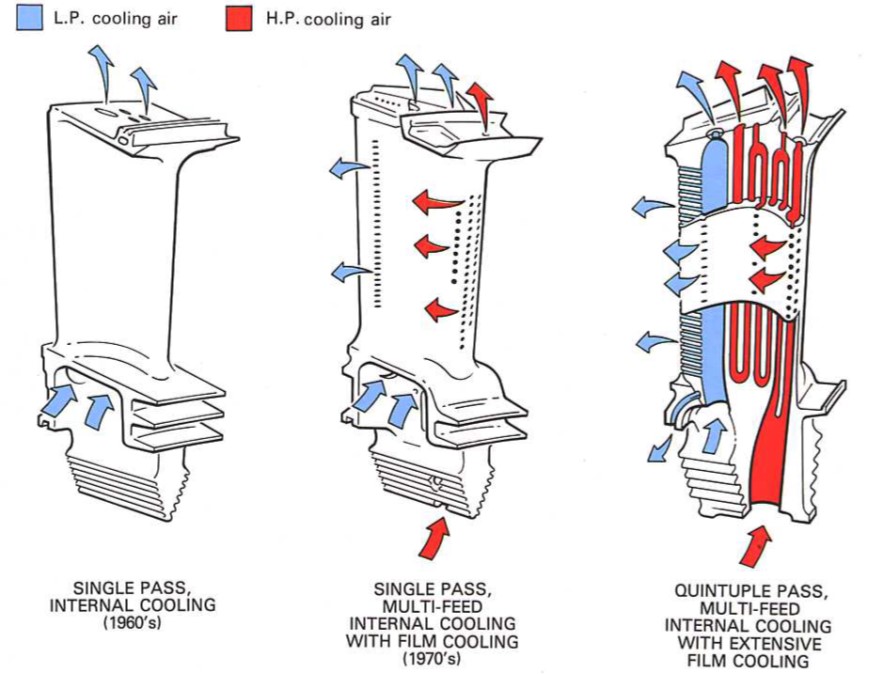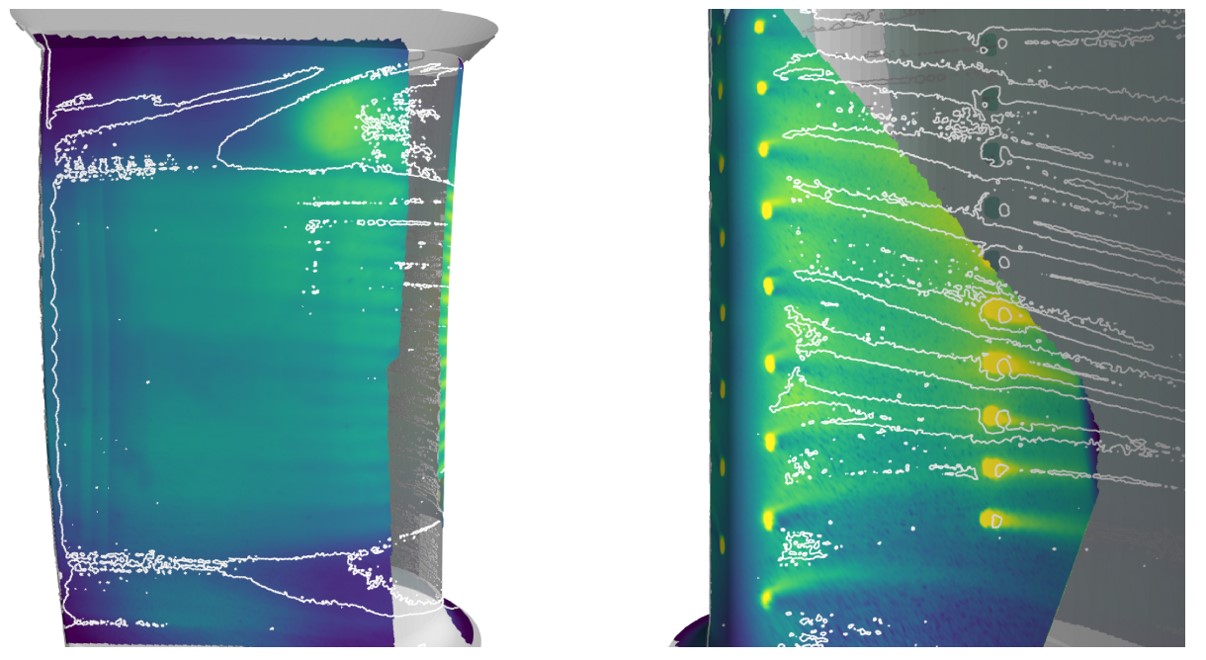Overview
To increase the thermal efficiency of a gas turbine (and therefore also of an aircraft engine), it is necessary to increase the pressure ratio and the turbine inlet temperature. This is limited, among other things, by the cooling of the high-pressure turbine blades, which are exposed to increased thermal stress. In order to reliably protect the blades from the rising hot gas temperatures using reduced cooling air of increasing temperature, more efficient cooling methods are required.
New cooling processes for high-pressure turbine rotor blades are therefore being developed at the Institute of Thermal Turbomachinery. In particular, internal cooling and its influence on film cooling is being investigated so that the overall cooling effect can be improved. By using additive manufacturing processes, the internal geometry and the film cooling holes can be designed almost freely, making aerodynamic and thermal optimizations of the cooling system possible.

Figure 1: Internal and external cooling methods in modern turbine rotor blades [1]
Objectives
- Improvement of the internal heat transfer with comparable or lower pressure loss
- Increasing the overall cooling efficiency by adapting the film cooling to the internal cooling
- Spatially resolved investigation of the internal heat transfer under machine-like operating conditions
For the experimental investigation and evaluation of new cooling configurations, the ITS has a test rig with which the aerodynamic and thermal boundary conditions of a real turbine blade can be simulated. Any cooling configurations, consisting of internal and film cooling, can be installed and investigated.
The overall cooling effectiveness is assessed using infrared thermography, which has been used at ITS for over 20 years and has been continuously developed further, enabling highly accurate surface temperature measurements under machine-like operating conditions.

Figure 2: Temperature distribution on trubine rotor blade measured using infrared thermography [2]
Sources
[1] ROLLS-ROYCE PLC (1986): The Jet Engine. ISBN 0902121235
[2] ELFNER, M. (2019): Evaluation of new methods for cooling turbine rotor blades. KIT. DOI: 10.30819/4838


